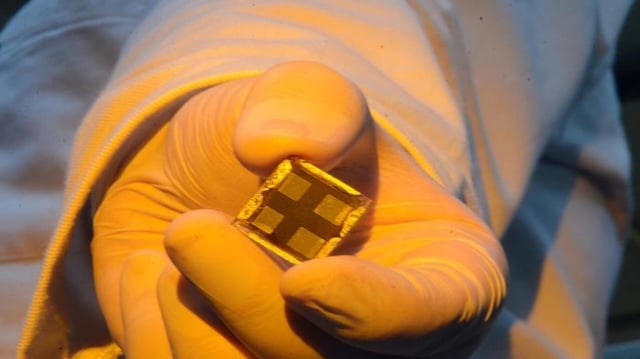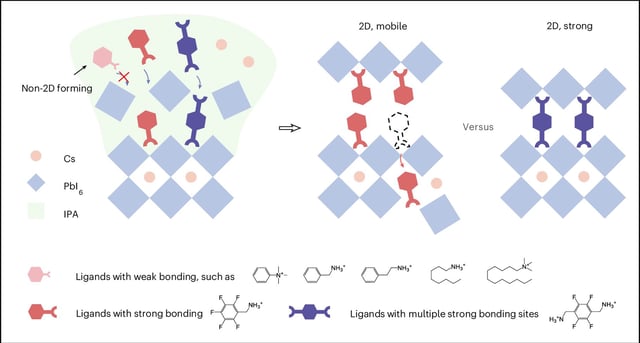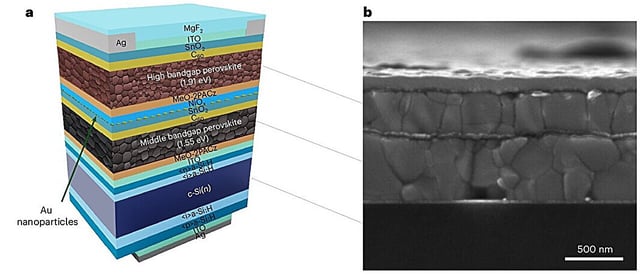Overview
- University of Sydney-led researchers reported a 23.3% certified steady-state efficiency on a 16 cm² triple-junction perovskite–perovskite–silicon cell.
- A 1 cm² device reached 27.06% efficiency and passed IEC Thermal Cycling across 200 swings between −40°C and 85°C.
- The smaller cell retained 95% of its efficiency after more than 400 hours of continuous illumination under test conditions.
- Stability and performance gains were achieved by replacing methylammonium with rubidium, using piperazinium dichloride for surface treatment, and engineering gold nanoparticles at the interlayer.
- The peer-reviewed results in Nature Nanotechnology include independent certification and the largest device of its kind reported, with manufacturing scale-up and long-term field durability still to be demonstrated.


